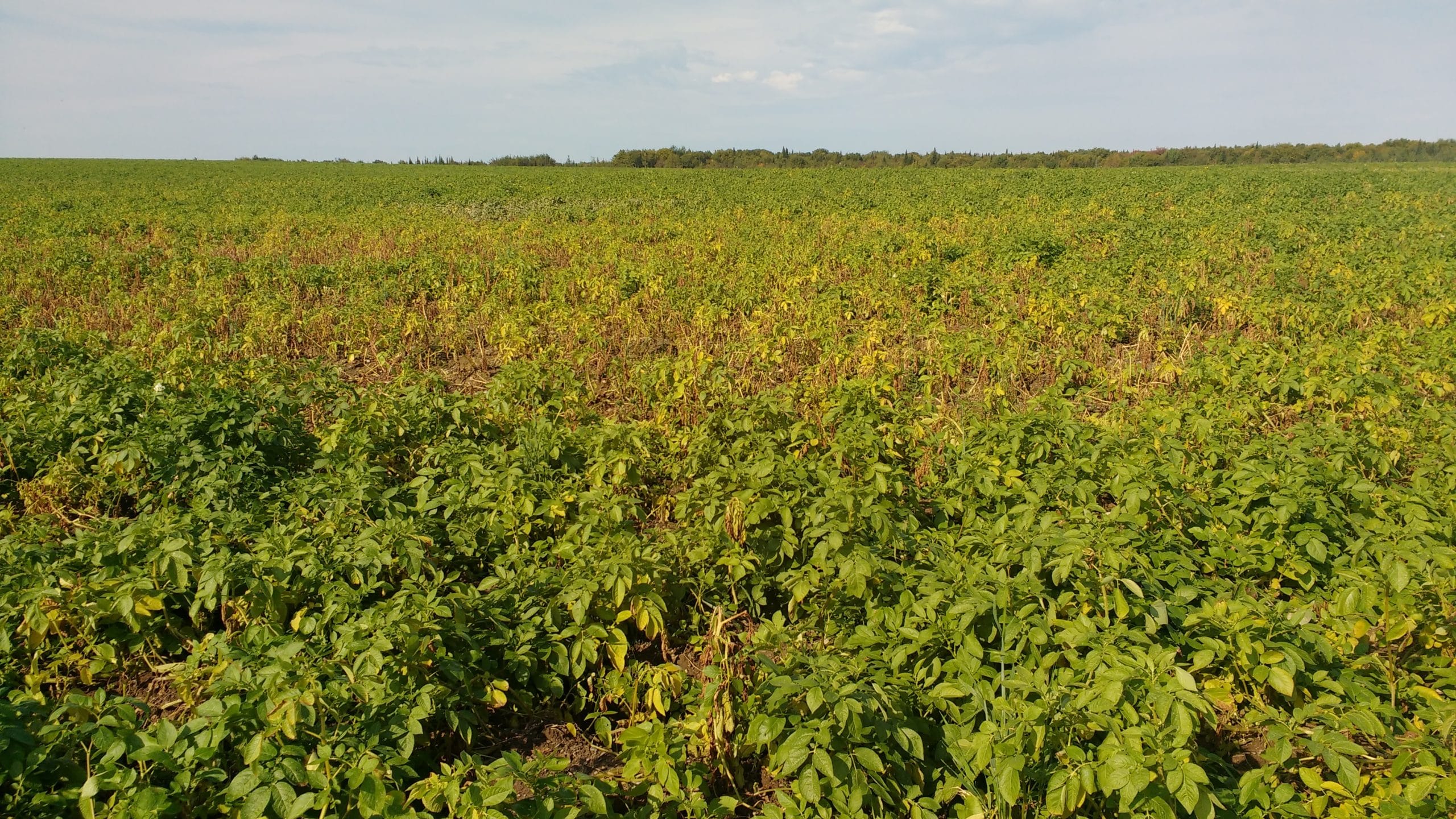CanPEDNet is trying to solve problems with Canadian potato production by reducing PED severity and increasing yields.
The Canadian potato industry is growing and more processing facilities are being built across the country. And while that is great news for growers, it means there would need to be more potatoes production nationally.
At the same time, low potato yields were also being reported in the Maritimes. The combination of the two had the potato industry looking for ways to reduce any production limits. This included tackling potato early dying (PED) which had been weighing on yields for years.
“We were trying to alleviate any constraints on production with potato early dying being one of them. The goal of this network is to reduce the severity of potato early dying in all major potato production areas of Canada, providing potato growers with knowledge, tools, technologies to manage PED and increase potato productivity and profitability,” Mario Tenuta explains during a presentation at the Canadian Spud Congress on March 22.

Tenuta is the NSERC/WGRF/Fertilizer Canada Industrial Research chair in 4R Nutrient Stewardship and a professor of applied soil ecology at the University of Manitoba. He’s also the co-lead of the Canadian Potato Early Dying Network, aka the CanPEDNet. CanPEDNet started in the fall of 2019 and has focused on creating a national network of researchers who are collaborating on PED management in Canada.
The project was originally started by Bernie Zebarth. He wanted to create a team to boost the understanding and research of PED in Canada and recruited Tenuta to work with him. The two devised a project proposal as part of the Canadian Potato Council with the Canadian Horticultural Council cluster projects funded by the Canadian Agricultural Partnership (CAP). Just as they were approved for funding Zebarth retired and his colleague Dahu Chen, a research scientist with AAFC in Fredericton, N.B., stepped up to the plate and became the other co-lead on the project.
What is PED?
PED is a disease complex that’s mainly caused by Verticillium dahliae. It kills potato vines early in the season reducing late season tuber bulking making for smaller potatoes, Tenuta explains.
Verticillium dahliae can produce PED on its own or in conjunction with a pest. One of the major pests it partners with is the root lesion nematode Pratylenchus penetrans. There are other diseases that it can work with also.

PED will cause vascular wilt disease in potatoes. Tenuta says it gums up the vascular tissue turning it brown, plugging it up and stopping it from being able to transfer water anymore putting it under heat stress. The plant overheats by being unable to transpire enough water, causing it to die or wilt. To try and fight PED, the plant will produce more new vines to circumvent the plugged-up areas. But when it can’t circumvent the plugged-up areas, that’s when tuber size is reduced, robbing the plant of large potatoes.
As part of the CanPEDNet, PED samples from across Canada have been collected and studied to identify the species and population levels of the major causal agents. Through tests at the ACS Lab, it was discovered the main Verticillium species present across Canada is Verticillium dahliae, along with some Verticillium albo-atrum.
There have also been other soil-borne pathogens associated with PED found. Pathogens discovered during tests have included Colletotrichum coccodes, Spongospora subterranea, Fusarium spp., Pythium ultimum, Streptomyces scabies, Helminthosporium solani, Phytophthora erythroseptica, and Rhizoctonia solani.
Tenuta says they’re working on putting in place a protocol for growers from across Canada to be able to send their samples in for PCR testing to identify PED pathogens and quantity in soil.
Stopping PED in its Tracks
To try and find ways to reduce PED severity, eight fields each year in New Brunswick and P.E.I. were studied in 2020 and 2021. Up to 30 fields were originally tested for PED pathogen population density in a fall survey with eight of them then being selected for a case study — four having high pathogen levels and four having low pathogen levels.
The tests found that by reducing Verticillium dahliae inoculum density, they could reduce PED severity and potato yield loss. Another test compared PED levels after a two-year crop rotation starting 2017, and three-year crop rotation starting in 2019. Rotation crops planted in fields included mustard as a biofumigant, forage pearl millet, marigold, sorghum sudan grass, pea, buckwheat, soybean, Verticillium-resistant alfalfa, barley and a multi-species mix from McCain Foods.

In the first cycle of the two-year crop rotation study, they found significant root lesion nematode differences among treatments but no effect on Verticillium dahliae levels, Chen explains during the Congress presentation. In the second cycle of two-year crop rotation, there weren’t significant differences detected among rotation crops on root lesion nematodes, Verticillium dahliae density, and no yield differences either.
For the three-year rotation there was an 18.9 per cent yield increase of the pearl millet-brown mustard-potato rotation over the barley-potato two-year rotation. Chen notes the three-year rotations resulted in a higher yield than the two-year rotation. It was also found PED severity was reduced by 10 to 35 per cent.

Another project has focused on increasing soil carbon input by planting summer cover crops with and without manure in P.E.I. Cow manure was used as a fertilizer on cover crop rotations including alfalfa and orchardgrass; sorghum sudan grass; ryegrass, common vetch and crimson clover; forage pearl millet; sorghum sudan grass and verticillium resistant alfalfa; and winter rye and hairy vetch.
Through the studies it was discovered manure increased total yield by 28 per cent and marketable yield by 26 per cent. It was also found manure increased soil nitrogen levels by an average of 44 per cent and manure also significantly reduced Verticillium dahliae density — but the effect didn’t last long in fields.
There’s still more work to be done on reducing PED severity but based on the first few tests it has been found three-year crop rotations reduces disease severity and improves potato yield more than a two-year rotation. It’s also been discovered the choice of rotation crops affects PED severity, potato yield and soil fertility.
Related Articles
Banding Together to Stop Potato Early Dying in Canada
Research Roundup: Potato Early Dying Complex
Top Contenders for Potato Pests and Diseases Across Canada for 2022








